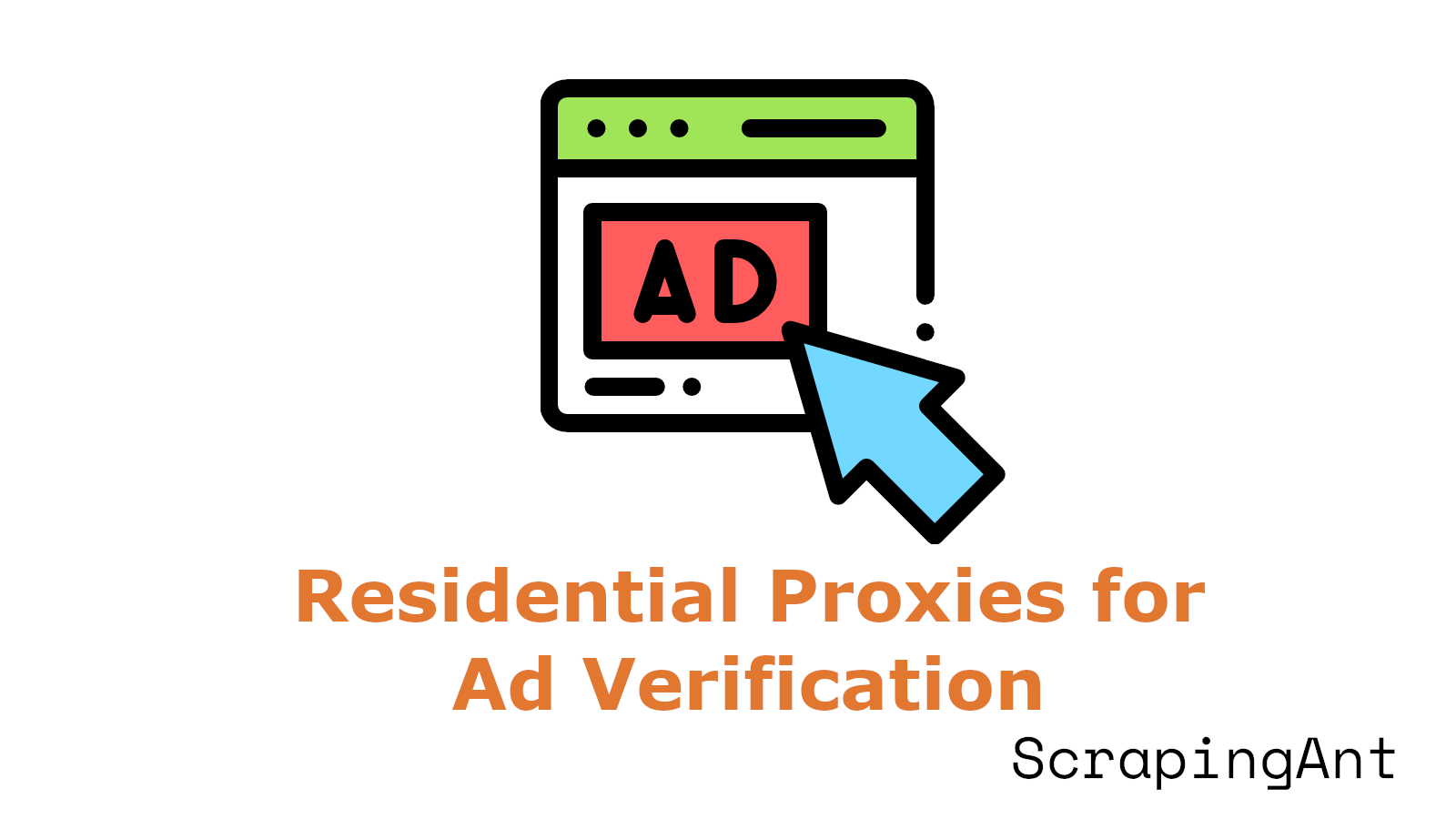
The integrity and effectiveness of ad campaigns face unprecedented challenges, with the industry suffering losses exceeding $61 billion due to ad fraud in 2022. As digital advertising continues to evolve, the need for robust verification methods has become paramount. Residential proxies have emerged as a critical tool in the fight against ad fraud, offering sophisticated solutions for advertisers to verify their campaign deliveries and protect their investments. These proxies, operating through legitimate IP addresses provided by Internet Service Providers (ISPs), enable comprehensive geographic testing, fraud detection, and quality assurance measures that are essential for maintaining the integrity of digital advertising campaigns. This research report examines the technical infrastructure, implementation strategies, and best practices for utilizing residential proxies in ad verification, while also addressing the crucial aspects of compliance, ethics, and performance optimization. Through analysis of current industry practices and technological capabilities, we explore how residential proxies are revolutionizing the approach to ad verification and fraud prevention in the digital advertising ecosystem.
Implementation Strategies and Best Practices for Ad Verification Using Residential Proxies
Proxy Pool Management and Rotation Strategies
Effective proxy pool management is crucial for successful ad verification campaigns. Organizations should implement intelligent rotation algorithms that:
- Maintain a minimum pool size of 1000-2000 residential IPs per target geography
- Rotate IPs every 10-15 minutes to avoid detection
- Implement automatic proxy health monitoring with 98%+ uptime targets
- Use dynamic proxy selection based on verification requirements
Organizations should maintain separate proxy pools for different verification tasks to optimize performance and reduce costs.
Technical Integration and API Implementation
The technical integration of residential proxies requires careful consideration of several key factors:
- API Authentication Methods
- Token-based authentication
- IP whitelisting
- Username/password combinations
- Session-based authentication
- Request Headers Configuration
X-Proxy-Location: [target country]
X-Proxy-Session-ID: [unique identifier]
User-Agent: [browser-specific string]
- Error Handling Protocols
- Implement retry mechanisms with exponential backoff
- Set timeout thresholds (recommended 30-60 seconds)
- Monitor response codes and handle accordingly
Proper technical integration can improve verification success rates by up to 40%.
Scaling and Performance Optimization
To maintain optimal performance during large-scale ad verification:
- Load Distribution
- Implement regional proxy clusters
- Use load balancing algorithms
- Set up failover mechanisms
- Concurrent Connection Management
- Limit concurrent connections per IP (recommended 5-10)
- Implement connection pooling
- Monitor bandwidth usage
- Cache Implementation
- Cache verification results for 5-15 minutes
- Implement intelligent cache invalidation
- Use distributed caching systems
Compliance and Ethics Framework
Organizations must establish robust compliance protocols:
- Legal Considerations
- Obtain necessary permissions for proxy usage
- Comply with GDPR and CCPA requirements
- Maintain audit trails of verification activities
- Ethical Guidelines
- Respect website terms of service
- Implement rate limiting
- Avoid excessive server load
- Documentation Requirements
- Maintain detailed logs of verification activities
- Document proxy usage policies
- Regular compliance audits
Quality Assurance and Monitoring
Implement comprehensive monitoring systems:
- Performance Metrics
- Response time tracking (target <2 seconds)
- Success rate monitoring (target >95%)
- IP diversity measurements
- Geolocation accuracy verification
- Alert Systems
- Set up real-time monitoring
- Configure alert thresholds
- Implement escalation procedures
- Reporting Framework
- Generate daily performance reports
- Track key verification metrics
- Monitor proxy health statistics
- Quality Control Measures
- Regular proxy testing protocols
- Automated verification validation
- Manual spot checks of results
- Performance benchmarking
This framework ensures consistent and reliable ad verification results while maintaining system integrity and compliance with industry standards.
Explore the most reliable residential proxies
Try out ScrapingAnt's residential proxies with millions of IP addresses across 190 countries!
Setting Up Headless Browser for Ad Verification
Automated ad verification ensures digital advertising campaigns deliver as intended, protecting brand safety and maximizing ROI. This section explores implementation approaches using Puppeteer's headless browser capabilities for ad verification.
Puppeteer's headless browser capabilities enable automated ad verification. Here's the optimal configuration:
// Configure browser with ad-verification specific settings
const puppeteer = require('puppeteer');
const browser = await puppeteer.launch({
headless: true,
args: [
'--no-sandbox',
'--disable-setuid-sandbox',
'--enable-features=NetworkService',
'--disable-features=IsolateOrigins,site-per-process'
]
});
This sample provides a secure and efficient headless browser setup for ad verification tasks, ensuring reliable and accurate results. Still, it's just the core of the implementation, and additional configurations are required to handle ad verification tasks effectively.
Ad Verification Automation Workflow
Automating ad verification tasks with Puppeteer involves a series of steps:
- Navigate to Ad URL
const page = await browser.newPage();
await page.goto('https://example.com/ad');
- Capture Ad Screenshot
await page.screenshot({ path: 'ad-screenshot.png' });
- Extract Ad Metadata
const adMetadata = await page.evaluate(() => {
return {
title: document.title,
description: document.querySelector('meta[name="description"]').content,
image: document.querySelector('img').src
};
});
- Validate Ad Content
const adContent = await page.content();
const adValidationResult = validateAdContent(adContent);
Alternatively, different scenarios may require additional steps, such as interacting with ad elements, validating tracking pixels, or analyzing ad performance metrics.
Ad Content Verification Techniques
Common Ad Verification Scenarios
- Display Ad Verification:
async function verifyDisplayAd(selector) {
const adVisible = await page.evaluate((sel) => {
const ad = document.querySelector(sel);
if (!ad) return false;
const rect = ad.getBoundingClientRect();
return rect.top >= 0 && rect.bottom <= window.innerHeight;
}, selector);
return adVisible;
}
- Video Ad Verification:
async function verifyVideoAd(selector) {
const videoMetrics = await page.evaluate((sel) => {
const video = document.querySelector(sel);
return {
duration: video.duration,
currentTime: video.currentTime,
playing: !video.paused
};
}, selector);
return videoMetrics;
}
Conclusion
The implementation of residential proxies for ad verification represents a significant advancement in combating digital advertising fraud and ensuring campaign effectiveness. Through sophisticated infrastructure and advanced detection capabilities, these systems provide advertisers with powerful tools to protect their investments and maintain campaign integrity. The research demonstrates that successful implementation requires a comprehensive approach, incorporating robust proxy pool management, technical integration, and strict compliance frameworks. As the digital advertising landscape continues to evolve, the role of residential proxies in ad verification will become increasingly crucial, necessitating ongoing adaptation and refinement of implementation strategies to address emerging challenges and maintain effective fraud prevention measures.